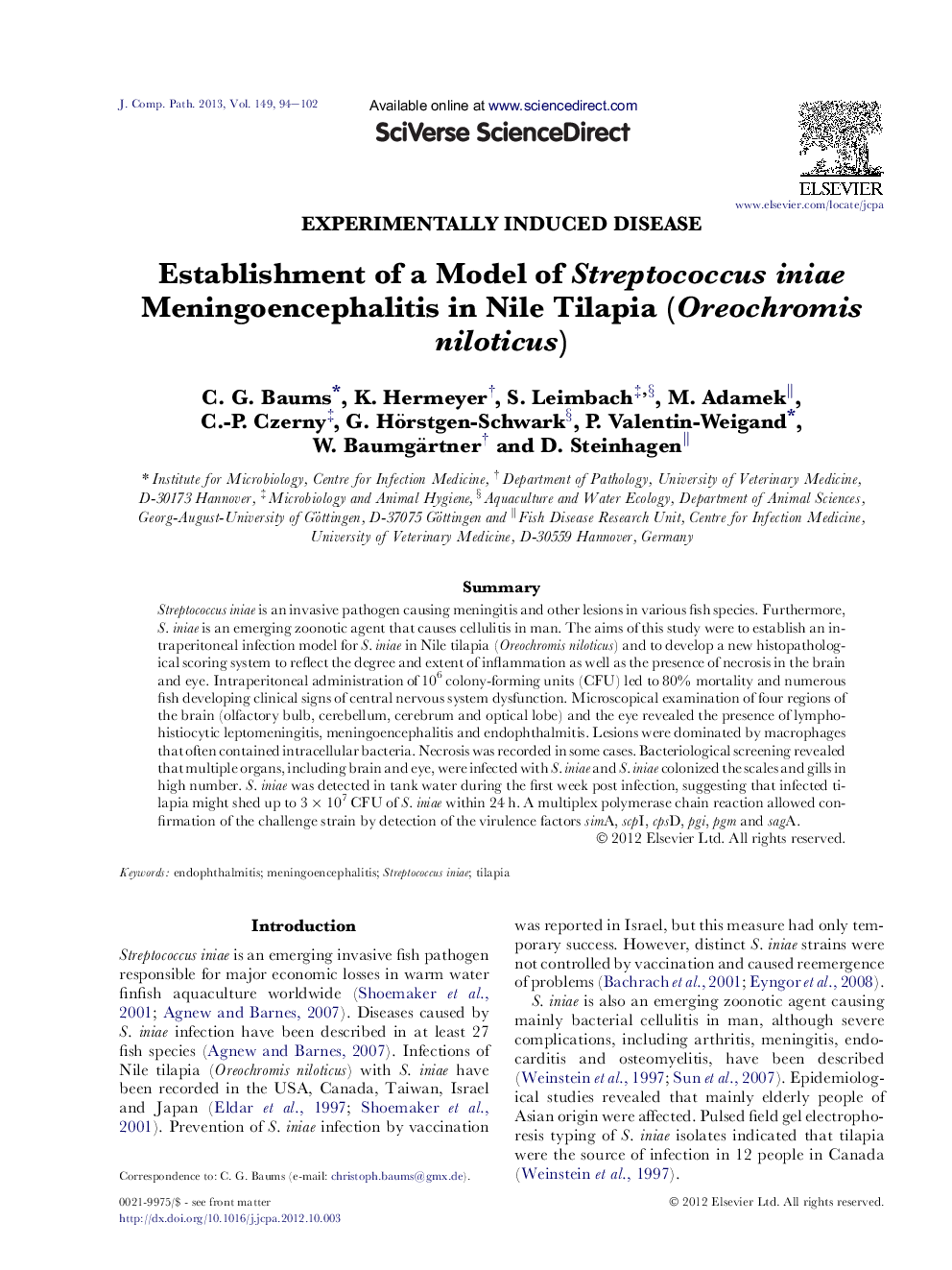| Article ID | Journal | Published Year | Pages | File Type |
|---|---|---|---|---|
| 2437677 | Journal of Comparative Pathology | 2013 | 9 Pages |
SummaryStreptococcus iniae is an invasive pathogen causing meningitis and other lesions in various fish species. Furthermore, S. iniae is an emerging zoonotic agent that causes cellulitis in man. The aims of this study were to establish an intraperitoneal infection model for S. iniae in Nile tilapia (Oreochromis niloticus) and to develop a new histopathological scoring system to reflect the degree and extent of inflammation as well as the presence of necrosis in the brain and eye. Intraperitoneal administration of 106 colony-forming units (CFU) led to 80% mortality and numerous fish developing clinical signs of central nervous system dysfunction. Microscopical examination of four regions of the brain (olfactory bulb, cerebellum, cerebrum and optical lobe) and the eye revealed the presence of lymphohistiocytic leptomeningitis, meningoencephalitis and endophthalmitis. Lesions were dominated by macrophages that often contained intracellular bacteria. Necrosis was recorded in some cases. Bacteriological screening revealed that multiple organs, including brain and eye, were infected with S. iniae and S. iniae colonized the scales and gills in high number. S. iniae was detected in tank water during the first week post infection, suggesting that infected tilapia might shed up to 3 × 107 CFU of S. iniae within 24 h. A multiplex polymerase chain reaction allowed confirmation of the challenge strain by detection of the virulence factors simA, scpI, cpsD, pgi, pgm and sagA.
